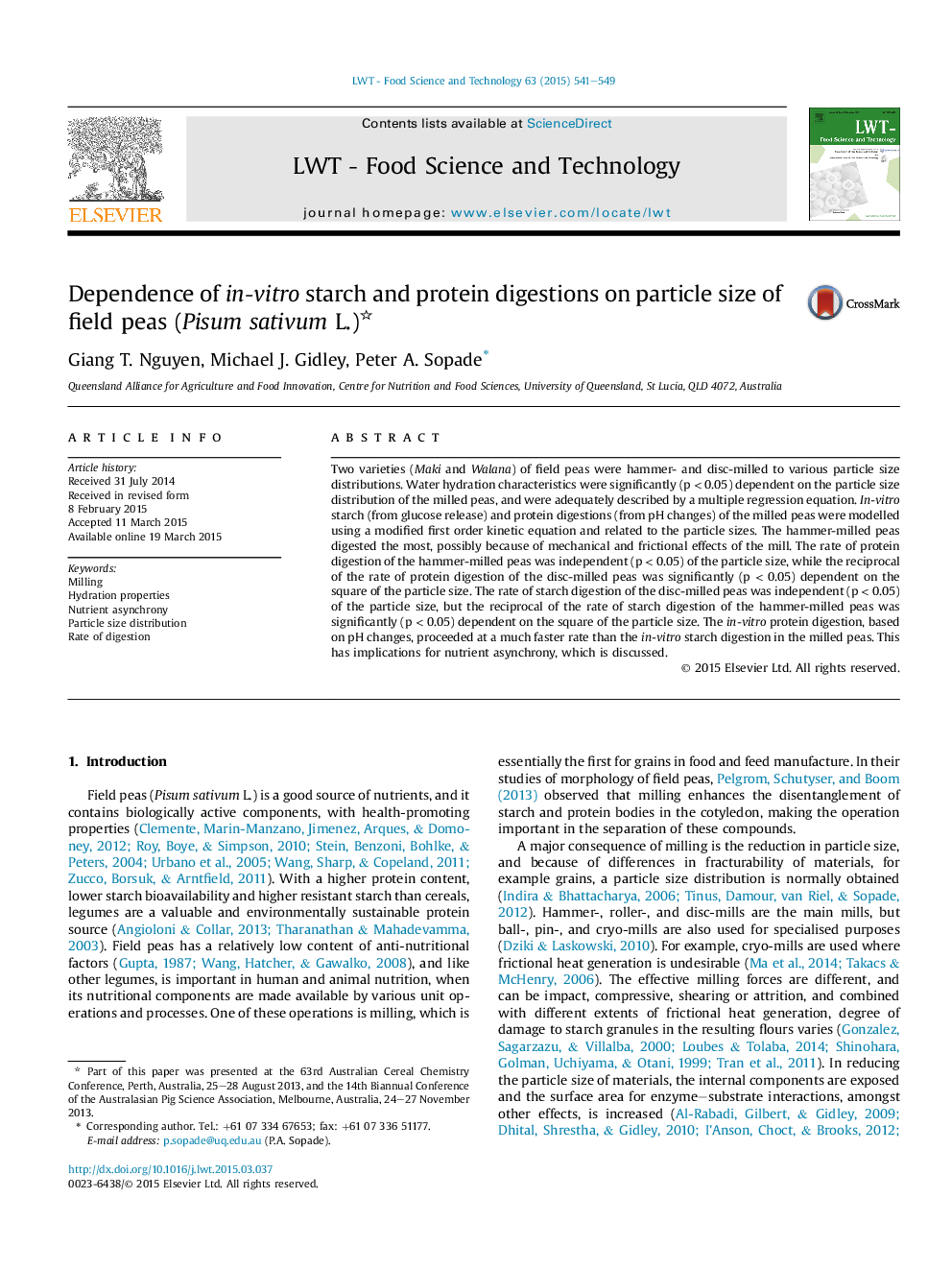| Article ID | Journal | Published Year | Pages | File Type |
|---|---|---|---|---|
| 6402143 | LWT - Food Science and Technology | 2015 | 9 Pages |
â¢Two varieties of field peas were disc- and hammer-milled to various particle sizes.â¢Rate of protein digestion of the disc-milled peas depended on the particle size.â¢Rate of starch digestion of the hammer-milled peas depended on the particle size.â¢Protein digestion (pH changes) in the milled peas was faster than starch digestion.
Two varieties (Maki and Walana) of field peas were hammer- and disc-milled to various particle size distributions. Water hydration characteristics were significantly (p < 0.05) dependent on the particle size distribution of the milled peas, and were adequately described by a multiple regression equation. In-vitro starch (from glucose release) and protein digestions (from pH changes) of the milled peas were modelled using a modified first order kinetic equation and related to the particle sizes. The hammer-milled peas digested the most, possibly because of mechanical and frictional effects of the mill. The rate of protein digestion of the hammer-milled peas was independent (p < 0.05) of the particle size, while the reciprocal of the rate of protein digestion of the disc-milled peas was significantly (p < 0.05) dependent on the square of the particle size. The rate of starch digestion of the disc-milled peas was independent (p < 0.05) of the particle size, but the reciprocal of the rate of starch digestion of the hammer-milled peas was significantly (p < 0.05) dependent on the square of the particle size. The in-vitro protein digestion, based on pH changes, proceeded at a much faster rate than the in-vitro starch digestion in the milled peas. This has implications for nutrient asynchrony, which is discussed.
